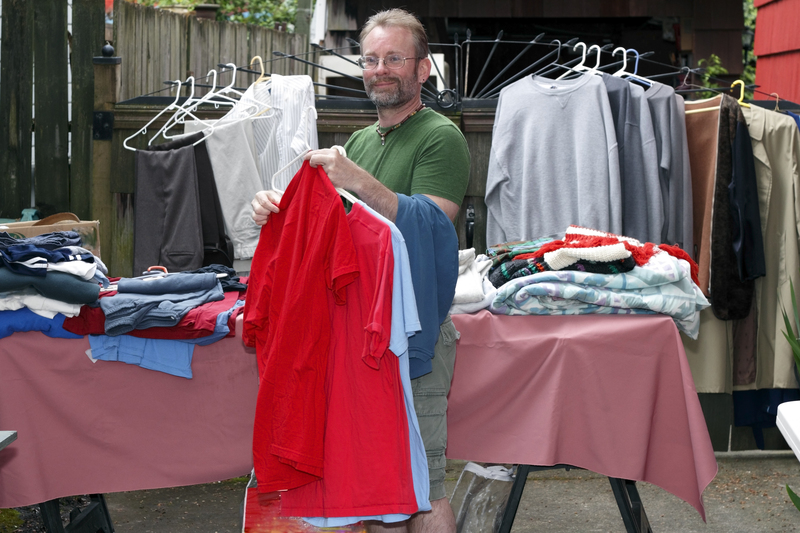Building Green Schools with Effective Recycling Plans
Building green schools with effective recycling plans is becoming a cornerstone of sustainable education and environmental stewardship. As educational institutions strive to set examples for their communities, implementing robust recycling initiatives supports both long-term ecological goals and fosters a culture of sustainability among students and staff. In this in-depth article, we explore the various ways schools can green their campuses, develop comprehensive recycling systems, and inspire future generations to become environmentally responsible citizens.
Why Building Green Schools Is Crucial for the Future
The concept of a green school extends far beyond energy-efficient buildings and renewable energy sources. It is about cultivating a holistic environment where sustainability influences every aspect, from curriculum integration to waste management. Green schools not only reduce operating costs and environmental footprints, but also improve student health, well-being, and academic performance. One of the most effective strategies in this movement is establishing effective recycling plans tailored for schools.

The Role of Effective School Recycling Plans
Recycling within educational institutions is not a passive endeavor. It involves careful planning, education, engagement, and continuous improvement. The impact of such plans goes well beyond waste reduction--it serves as a practical learning experience, teaching students about resource cycles, conservation, and global citizenship.
Key Benefits of Recycling in Schools
- Reduces landfill waste and conserves natural resources.
- Promotes environmental literacy among students and staff.
- Cuts costs associated with waste management and material consumption.
- Improves indoor air quality and overall campus environment.
- Aligns with education standards and sustainability goals.
How to Build a Green School with a Successful Recycling Program
To build a green school with an effective recycling system, it is necessary to approach sustainability comprehensively. Below are the crucial steps that make recycling a foundational part of campus life:
1. Conduct a Waste Audit
Before launching a new school recycling plan, it's essential to understand the composition and volume of waste generated. A thorough waste audit will help identify:
- The main sources of waste (classrooms, labs, cafeterias, offices).
- Types of materials most frequently discarded (paper, plastics, food waste, electronics).
- Existing recycling, composting, and landfill practices.
Tip: Involve students and staff in the audit process for educational benefits and increased buy-in.
2. Set Clear Goals and Policies
Establishing specific objectives--such as reducing landfill waste by a certain percentage each year--creates accountability. Develop a written recycling policy that includes:
- Designated recycling bins for various materials.
- Signage explaining what can and cannot be recycled.
- Roles and responsibilities for students, staff, and janitorial teams.
3. Choose the Right Collection Systems
Investing in efficient container systems is vital. Use color-coded, clearly labeled bins in high-traffic areas, ensuring they're accessible to everyone. Consider systems for:
- Paper and cardboard
- Plastics and metals
- Glass (if accepted by local programs)
- Organic waste (for composting programs)
- Specialty items (electronics, batteries)
4. Partner With Local Recyclers and Waste Haulers
Choose trustworthy local recycling vendors who can provide reliable pick-up, guidance, and data. Ask about acceptable materials, contamination protocols, and monthly reporting.
5. Integrate Recycling Into the Curriculum
The best effective recycling plans for schools tie sustainability directly into classroom learning. Ideas include:
- Eco club activities and recycling competitions
- Science curricula focused on waste cycles and resource conservation
- Art projects using recycled materials
- Hands-on lessons in composting and upcycling
Pro tip: Encourage student leadership and peer training for greater program adoption.
6. Engage the Whole Community
Building a green learning environment is a team effort. Foster partnerships and communication with:
- Parents and caregivers
- School boards and district administrators
- Local businesses and nonprofit organizations
- Municipal recycling coordinators
This network can offer resources such as educational workshops, recycled materials, or funding for program expansion.
7. Monitor, Evaluate, and Celebrate Success
Effective recycling in schools requires ongoing assessment. Use tracking tools to measure progress on diversion rates, contamination levels, and cost savings. Share results through assemblies, newsletters, or green events--celebrating achievements motivates continued participation!
Core Components of the Best School Recycling Plans
While every school's approach will differ, the most successful recycling programs for green schools share several foundational elements:
Collaboration and Leadership
- Designate a green team or sustainability coordinator to manage the initiative.
- Inspire student environmental ambassadors to promote practices among peers.
Clear Communication
- Post instructive, visual signs everywhere recycling happens.
- Hold regular assemblies, workshops, or classroom visits on recycling best practices.
Accessible Recycling Infrastructure
- Ensure bins are available and visible in each classroom, hallway, cafeteria, and office.
- Perform regular checks for bin overflow and contamination.
Feedback and Recognition
- Involve students in program improvement through surveys or suggestion boxes.
- Reward classes or grades with the best recycling rates or creative waste reduction ideas.
Continuous Improvement
- Update the program regularly based on audit findings and participant feedback.
- Experiment with new waste streams, such as e-waste or textile recycling.
Overcoming Barriers to Effective School Recycling Programs
Even the best-intentioned green school recycling plans can face obstacles. Awareness of these challenges and proactive planning can ensure lasting success:
- Contamination: Make sure everyone understands what belongs in each bin. Simple, consistent signage and hands-on demos help prevent costly mistakes.
- Inconsistent Participation: Keep the momentum alive with regular reminders, competitions, and youth leadership opportunities.
- Resource Constraints: Seek partnerships with local governments, PTAs, and green businesses for funding and resources.
- Lack of Data: Track waste and recycling weights regularly to demonstrate progress and justify continued investment.
Creative Ways to Boost Recycling in Green Schools
Looking to take your educational recycling efforts to the next level? Consider these innovative ideas:
- Host an annual "Zero Waste Week" challenge for classrooms or grades to see who can minimize waste the most.
- Start a composting club to turn cafeteria scraps into garden soil for school beautification projects.
- Install outdoor recycling bins near sports fields, playgrounds, and pick-up/drop-off zones.
- Organize e-waste collection days for the community, simultaneously fundraising and responsibly recycling electronics.
- Showcase upcycled student art projects at school events or in local businesses to spread sustainability awareness beyond the campus.
Integrating Recycling With Broader Green School Initiatives
For the fullest impact, make recycling part of your institution's larger sustainability strategy. Combine waste reduction with energy conservation, water-saving practices, green landscaping, and environmental education for a campus that leads by example.
Examples of Integrated Green Actions
- Install energy-efficient lighting and appliances.
- Start a school garden using composted food waste.
- Encourage walking, biking, or carpooling for eco-friendly transportation.
- Participate in green certification programs (LEED for Schools, Green Ribbon, etc.).

The Lasting Impact of Green School Recycling Plans
When schools invest in robust recycling initiatives as part of their commitment to greening their campuses, the results ripple throughout communities, inspiring lasting change. Graduates of green schools are more likely to practice environmental sustainability as adults and lead others in making conscious, earth-friendly choices.
By building green schools with effective, student-centered recycling plans, educational leaders empower future generations to become capable stewards of the natural world. The journey begins in the classroom, but its benefits extend far beyond.
Start Greening Your School Today
Is your school ready to become a model for sustainability? Begin with a waste audit, build a tailored recycling plan, and engage your entire community. The path to a greener tomorrow starts with the steps you take today. Build your green school, and watch it grow into a beacon of hope and responsibility for all.
Keywords:
Building green schools, effective recycling plans, school recycling programs, sustainable campuses, green learning environments, environmental education, sustainable waste management in schools, green initiatives in education, recycling in schools, green school leadership, comprehensive recycling program for schools.